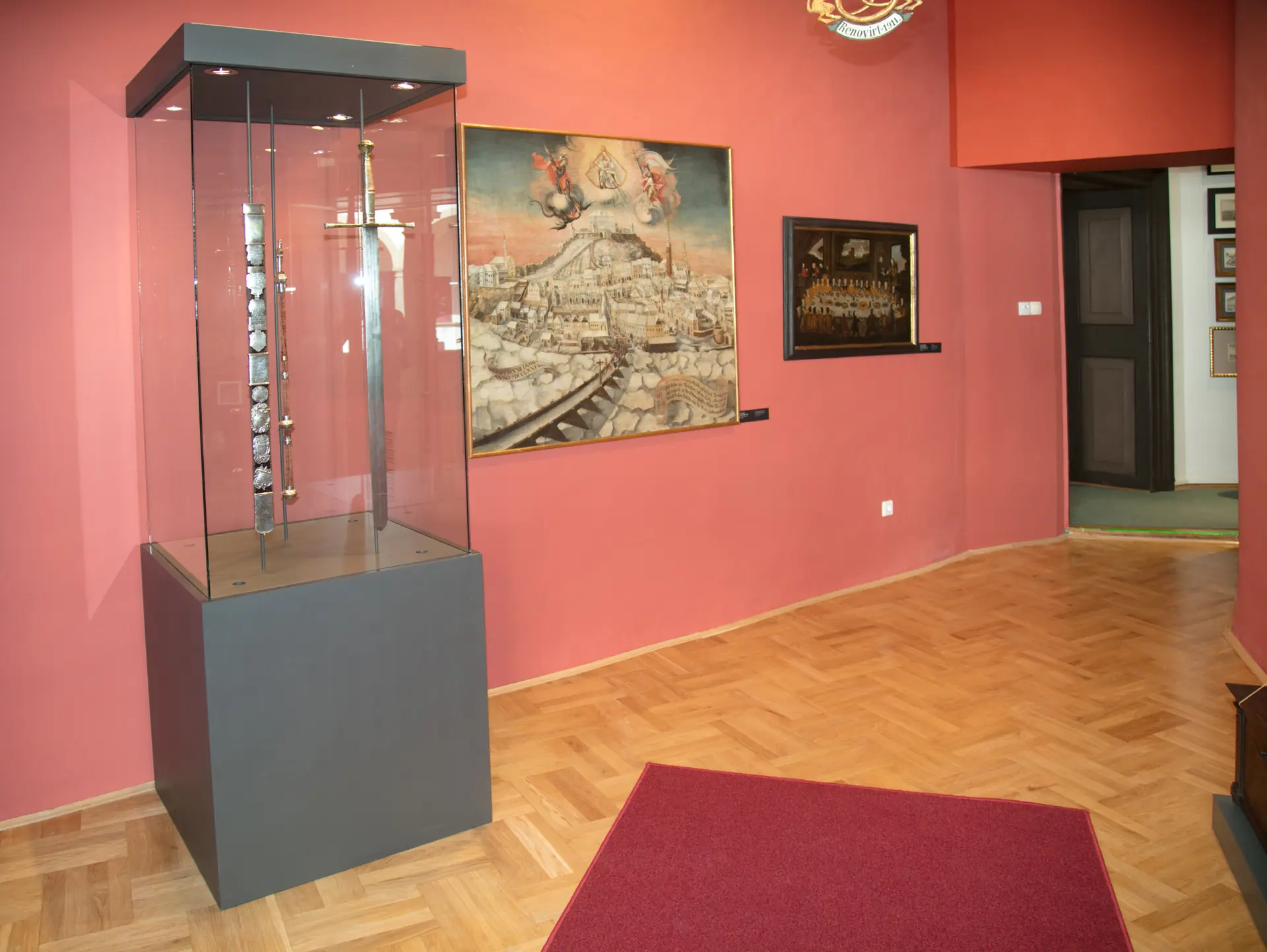The first floor of Ptuj Castle houses a collection of feudal dwelling culture with furnishings dating from the 16th to the 20th century. The furniture and artworks, which mostly come from the estate of the Counts of Herberstein, create a historic ambience in the rooms. Some of the furnishings come from the nearby castles of Vurberk, Hrastovec and Ormož, and a few pieces from the mansions of Dornava and Turnišče.
The carefully furnished rooms are adorned with ceiling stucco and lavish chandeliers, and the tile stoves and numerous clocks of various shapes and sizes are particularly striking.

Insignia of the Ptuj town judge
The wonderfully preserved sword, scabbard, and staff of the Ptuj town judge are exceptional objects documenting the judicial authority in the city. They were in use from 1555 until 1787, when Emperor Joseph II dissolved the magistrate’s court and the town was given a mayor.
The judge’s sword is a hand-and-a-half sword and was not used as a weapon but as a ceremonial object to mark the honour of the town judge.
The painting entitled Ex-voto or Ice on the River Drava was commissioned by the citizens of Ptuj in gratitude for the fact that Ptuj’s patron saints, St George, St Florian, and St Mary, had protected the bridge from the accumulated ice slabs.